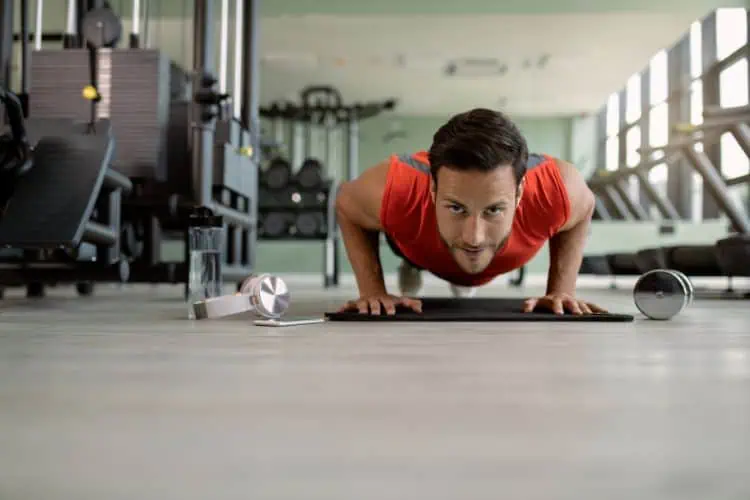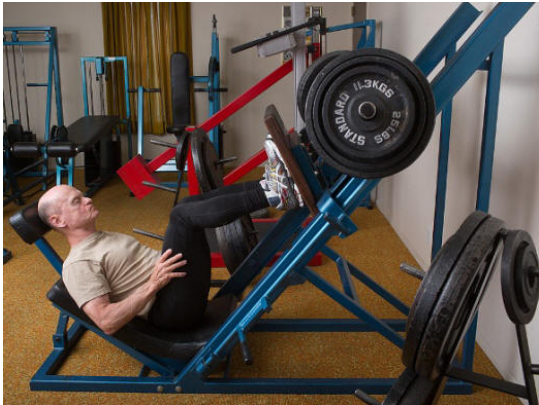

High-Intensity Interval Training (HIIT) has revolutionized the fitness world. Combining bursts of intense activity with short recovery periods, HIIT workouts are efficient, versatile, and effective for burning calories, building strength, and improving cardiovascular health. Whether you’re a beginner or a seasoned athlete, HIIT workout training can be tailored to your fitness level and goals. In this blog post, we’ll explore the ins and outs of HIIT workout training, its benefits, and how to structure the perfect training session.
What is HIIT Workout Training?
HIIT is a form of cardiovascular exercise that alternates between short bursts of high-intensity activity and low-intensity recovery periods. A typical HIIT session lasts anywhere from 10 to 30 minutes, making it a time-efficient workout option for busy individuals.
The hallmark of HIIT is its intensity. During the high-intensity phases, you’re pushing your body to its limits, often reaching 80-95% of your maximum heart rate. The recovery phases allow your heart rate to lower and your body to prepare for the next burst of effort. This cycle of intense work and recovery not only improves cardiovascular fitness but also burns more calories in less time compared to traditional steady-state cardio.
The Benefits of HIIT Workouts Training
1. Efficient Calorie Burn
HIIT workouts are known for their calorie-torching capabilities. Because of the high intensity, your body continues to burn calories even after the workout is over, a phenomenon known as Excess Post-Exercise Oxygen Consumption (EPOC).
2. Improved Cardiovascular Health
HIIT strengthens your heart and increases oxygen uptake. Studies show that it can improve VO2 max (the maximum amount of oxygen your body can use during exercise) more effectively than steady-state cardio.
3. Builds Strength and Endurance
Incorporating bodyweight exercises, resistance training, or weighted movements in HIIT can help build muscle strength and endurance alongside cardiovascular fitness.
4. Boosts Metabolism
HIIT increases your metabolic rate for hours after the workout, enhancing fat burning and promoting weight loss.
5. Time-Saving
With workouts ranging from 10 to 30 minutes, HIIT fits seamlessly into busy schedules, offering maximum benefits in minimal time.
How to Structure a HIIT Workout Training
1. Warm-Up (5-10 Minutes)
A proper warm-up is crucial to prepare your body for the intensity of a HIIT session. Include dynamic stretches and light cardio movements like jogging, jumping jacks, or arm circles.
2. The Work Phase
During the work phase, push yourself as hard as you can. Exercises can include sprints, burpees, jump squats, or kettlebell swings. Aim for 20-60 seconds of effort.
3. Recovery Phase
Follow the high-intensity effort with a recovery phase. This can be active recovery (e.g., walking or slow jogging) or complete rest. Recovery durations usually last as long as or slightly longer than the work phase.
4. Cool Down (5-10 Minutes)
End your session with a cool-down to lower your heart rate and stretch your muscles. This aids recovery and reduces the risk of injury.
Sample HIIT Workouts Training
1. Beginner-Friendly HIIT
Duration: 15 minutes
- Warm-up: 5 minutes of dynamic stretches and light cardio
- Work Phase:
- 20 seconds of jumping jacks
- 40 seconds rest
- 20 seconds of bodyweight squats
- 40 seconds rest
- Repeat for 4 rounds
- Cool Down: 5 minutes of stretching
2. Intermediate HIIT Workout Training
Duration: 20 minutes
- Warm-up: 5 minutes of jogging and arm circles
- Work Phase:
- 30 seconds of burpees
- 30 seconds rest
- 30 seconds of mountain climbers
- 30 seconds rest
- 30 seconds of push-ups
- 30 seconds rest
- Repeat for 4 rounds
- Cool Down: 5 minutes of yoga stretches
3. Advanced HIIT
Duration: 25 minutes
- Warm-up: 5 minutes of dynamic mobility exercises
- Work Phase:
- 40 seconds of kettlebell swings
- 20 seconds rest
- 40 seconds of jump squats
- 20 seconds rest
- 40 seconds of sprinting in place
- 20 seconds rest
- Repeat for 5 rounds
- Cool Down: 5 minutes of deep stretches
Common Mistakes to Avoid With HIIT Workout Training
1. Skipping the Warm-Up
Diving straight into high-intensity exercises without warming up can lead to injuries and decreased performance.
2. Overtraining
While HIIT is highly effective, doing it too often can lead to burnout or injuries. Limit HIIT sessions to 2-4 times per week and balance them with lower-intensity workouts or rest days.
3. Improper Form
Performing exercises with poor form increases the risk of injury. Focus on technique, especially during high-intensity movements.
4. Ignoring Recovery
Recovery is just as important as the workout itself. Make sure to include adequate rest periods both within the workout and in your weekly schedule.
HIIT Workout Training for Specific Goals
1. Weight Loss
HIIT is excellent for burning calories and promoting fat loss. Incorporate exercises that engage multiple muscle groups, like burpees, jump squats, and mountain climbers, for maximum calorie burn.
2. Building Muscle
To build muscle, include resistance-based movements like kettlebell swings, push-ups, or dumbbell thrusters in your HIIT routine. Use moderate weights and focus on explosive power during the work phase.
3. Improving Athletic Performance
Athletes can use HIIT to enhance speed, agility, and endurance. Incorporate sport-specific drills, such as sprint intervals, agility ladder drills, or plyometric exercises.
HIIT Modifications for All Levels
HIIT can be tailored to any fitness level:
- Beginners: Start with shorter work phases and longer recovery periods (e.g., 20 seconds work, 40 seconds rest).
- Intermediate: Balance work and recovery times (e.g., 30 seconds work, 30 seconds rest).
- Advanced: Push for longer work phases and shorter rest periods (e.g., 40 seconds work, 20 seconds rest).
Equipment for HIIT Workouts Training
HIIT doesn’t require fancy equipment, but adding tools can enhance your workouts. Here are some common options:
- Bodyweight: No equipment needed. Focus on moves like burpees, lunges, and push-ups.
- Kettlebells: Great for swings, goblet squats, and one-arm snatches.
- Dumbbells: Perfect for weighted squats, thrusters, and renegade rows.
- Resistance Bands: Add extra resistance to bodyweight exercises.
- Jump Rope: Excellent for cardio-focused HIIT sessions.
HIIT Workouts Training and Nutrition
To maximize the benefits of HIIT, proper nutrition is key. Follow these guidelines:
- Pre-Workout: Eat a small meal or snack rich in carbohydrates and protein 1-2 hours before your workout.
- Post-Workout: Refuel with a meal containing protein and carbs within an hour of completing your session.
- Hydration: Drink plenty of water before, during, and after your workout to stay hydrated.
Tracking Progress
Monitor your progress to ensure you’re getting the most out of your HIIT workouts:
- Performance Metrics: Track improvements in endurance, strength, and speed.
- Heart Rate: Use a fitness tracker to monitor your heart rate during workouts.
- Body Composition: Measure changes in body fat percentage and muscle mass over time.
HIIT workouts training are a powerful tool for improving fitness, losing weight, and boosting overall health. With their adaptability and efficiency, they’re suitable for anyone looking to make the most of their workout time. Start with a beginner-friendly routine and gradually increase the intensity as you become more comfortable. Remember to prioritize proper form, recovery, and nutrition to maximize your results.










Leave a Comment